

Remember the time when writing felt limited by the constraints of human creativity and time?
The emergence of GPT-3 has reshaped our relationship with words and AI.
Gone are days of repetitive, uninspired text; GPT-3’s groundbreaking technology has revolutionized our approach to generating prose, sparking a surge in creativity and efficiency.
As 2024 unfolds, the spotlight turns to the quest for GPT3 alternatives, each vying to add a unique twist to this narrative.
But why look for other options?
These contenders more than mirror GPT-3’s talents; they bring their flair to the table. They cater to an array of needs in natural language processing and generation. The landscape is rich with options for creative writing, machine translation, or sophisticated AI models.
Let’s look at the top 10 alternatives redefining the AI landscape.
What Should You Look for in GPT3 Alternatives?
When searching for GPT3 alternatives, several vital factors should guide your choice. These include:
- Model size and complexity: Look for models with various parameters for complex language tasks. Also, consider the computing power required
- Language support: Ensure the model supports multiple languages if you require multilingual capabilities
- Performance: Evaluate how well the model performs tasks relevant to your needs, such as text generation, conversational AI, or logical reasoning
- Training and finetuning: Check if the model allows fine-tuning your specific data, enhancing its effectiveness for your use case
- Open source vs. proprietary: Open-source models offer more customization and community support, while proprietary ones might have better support and stability
- Ethical considerations: Consider how the model handles sensitive data and its approach to ethical AI practices.
The 10 Best GPT3 Alternatives to Use in 2024
Here are the top 10 alternatives offering a unique blend of innovation, efficiency, and specialized features. They play a significant role in setting new benchmarks in natural language generation and understanding.
1. ClickUp

ClickUp is revolutionizing task management and creative processes with its advanced AI features. Its AI capabilities greatly enhance the writing experience, assisting users in efficiently creating and managing tasks. This AI integration extends to ClickUp Docs, which aids in drafting, editing, and organizing documents, streamlining the documentation process.
Additionally, ClickUp’s AI facilitates ideation and brainstorms sessions, providing users with smart suggestions and insights that encourage creativity.
ClickUp best features

- AI-powered writing assistance: Assists in generating and refining content for emails, reports, and creative writing
- AI-driven ideation and brainstorming tools: Facilitates creative sessions with smart suggestions and insights
- Social media AI tools: Optimizes social media management and content creation
- Enhanced task creation using AI: Smartly creates and manages tasks, improving organization and efficiency

- AI content generator: Automates content generation for various platforms
- Outline Generators: Streamlines the process of creating structured outlines for projects and documents
- Workflow templates: Provides customizable templates to enhance workflow efficiency
- Productivity boosting features: Offers tools and integrations to maximize productivity
ClickUp limitations
- Some users report a learning curve to fully utilize all features
- Integration with certain external tools can be improved
ClickUp pricing
- Unlimited: $7/month per user
- Business: $12/month per user
- Enterprise: Contact for pricing
- ClickUp AI is available on all paid plans for an additional $7 per Workspace
ClickUp ratings and reviews
- G2: 4.7/5 (2,000+ reviews)
- Capterra: 4.7/5 (2,000+ reviews)
2. Writesonic

Writesonic is a prominent ChatGPT alternative, offering a suite of content creation and enhancement tools. You will get advanced AI capabilities for writing, conversation, and creative brainstorming. Writesonic helps users quickly generate high-quality text, making it a valuable asset.
Writesonic best features
- Chatsonic: A standout feature for content creation, Chatsonic is akin to ChatGPT but with added functionalities like Google Search integration, enabling real-time data access and AI Image Generation
- Up-to-date factual responses: With its Google integration, Writesonic provides current information and references, essential for content creators needing the latest data
- Extensive prompt library: Over 1,000 prompts are available, catering to various use cases, which is beneficial for marketing and sales
- Multilingual capabilities: Writesonic breaks language barriers, making it a versatile tool for global audience engagement
Writesonic limitations
- May require some learning for users new to AI writing tools
- The depth of content generated can vary depending on the complexity of the task
Writesonic pricing
- Free plan: $0 per month, 10,000 words/month, GPT 3.5 model
- Freelancer plan: $16/month (annual payment) or $20/month (monthly payment), Unlimited words, Only GPT 3.5 model
- Small team plan: Starts from $33/month for 400,000 words, GPT 3.5, GPT 4, and GPT 4-32K models
- Enterprise plan: $500+ per month, custom packages available
Writesonic ratings and reviews
- G2: 4.8/5 (1,840 reviews)
- Capterra: 4.8/5 (1,792 user reviews)
3. Jasper.AI

Jasper.AI, a formidable contender of GPT3 alternatives, is tailored for businesses seeking advanced AI capabilities. It’s designed to enhance productivity in content creation, from brainstorming to completion. It is a go-to tool for anyone needing to generate text or engage with an AI-powered chatbot.
Jasper.AI best features
- Expansive knowledge base: Jasper.AI’s vast knowledge from billions of web sources equips it to discuss complex topics with a detailed understanding
- Conversational AI interface: The user-friendly interface of Jasper Chat simplifies interaction with AI, making it more accessible and engaging
- Contextual memory: Its ability to remember previous interactions in a chat provides a more coherent and contextually aware conversation flow
- Diverse content creation: It excels in generating a wide range of content, from blog posts to scripts, adding versatility to its AI capabilities
Jasper.AI limitations
- Specificity in instructions: Jasper may require precise prompts for best results, especially in complex tasks
Jasper.AI pricing
- Creator plan: $39 per month
- Teams plan: $99 per month
- Business plan: Pricing details are available upon contacting sales
Jasper.AI ratings and reviews
- G2: 4.7/5 (1,232 reviews)
- Capterra: 4.8/5 (1,819 reviews)
4. Google BARD
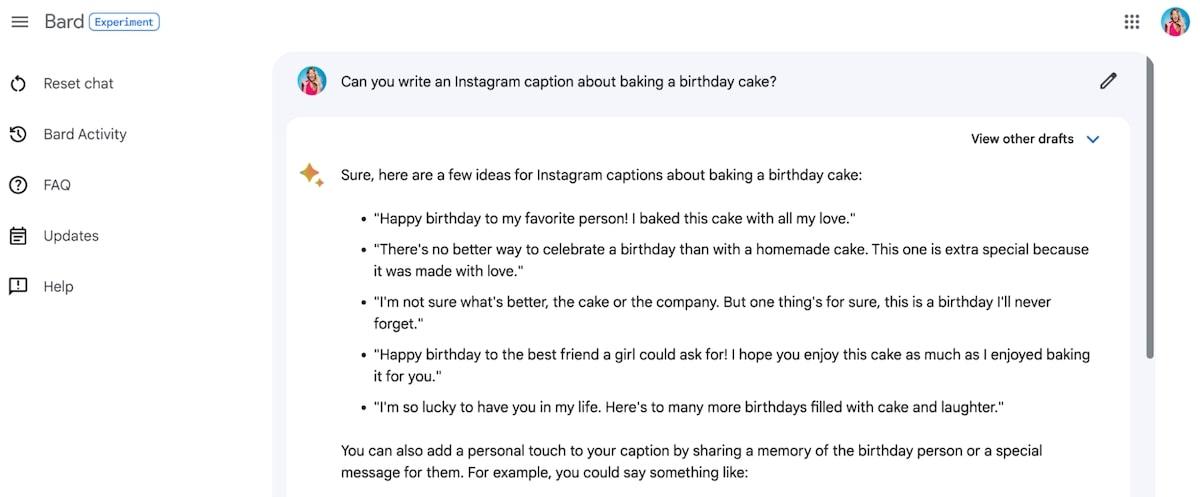
As a standout among GPT3 alternatives, Google BARD emerges as a powerful large language model developed to meet the increasing demands of natural language processing and generation. Its capabilities in handling a wide array of natural language tasks make it a top choice for those seeking alternatives to GPT3.
Google Bard best features
- Advanced natural language understanding: BARD is adept at comprehending and generating natural language, making it highly effective for a range of applications, from conversational AI to content creation
- Multilingual support: This model supports multiple languages, making it versatile for global use
- Deep learning and neural network-based technique: BARD leverages cutting-edge deep learning methodologies, providing superior performance in language tasks
Google Bard limitations
- Resource intensive: It requires significant computing power, which might not be feasible for all users
- Complex integration: Integrating BARD into existing systems can be challenging for users without technical expertise
Google Bard pricing
- Google Bard is entirely free, with no limit on the number of questions users can ask
Google Bard ratings and reviews
- G2: 4.3/5 (32 reviews)
- Capterra: Rating not available
5. Copy.AI
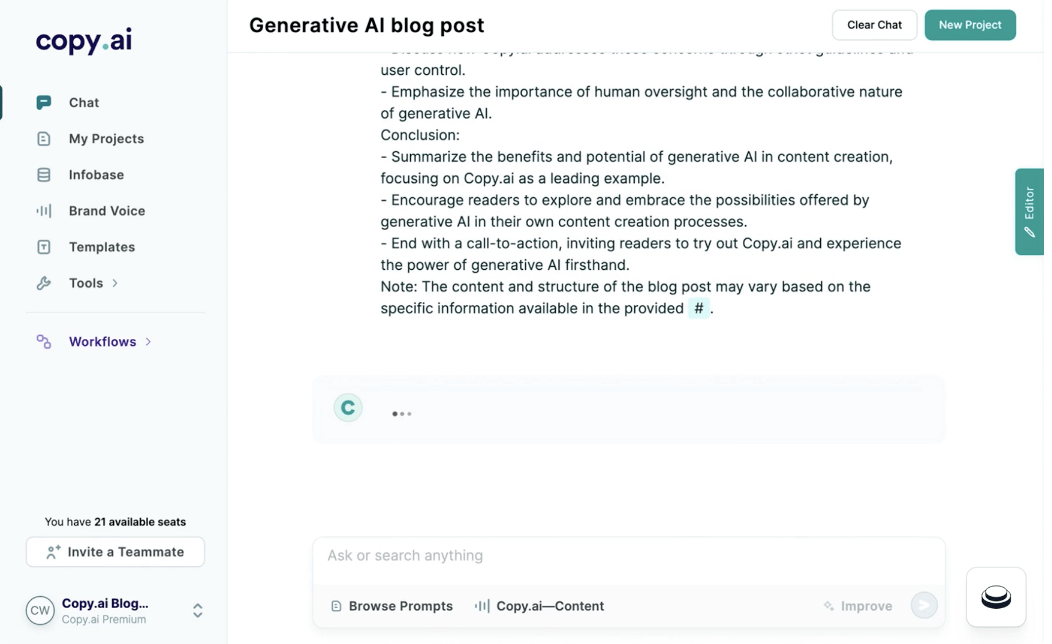
Copy.AI emerges as a notable GPT3 alternative in 2024, catering to those who need an AI-powered solution for text generation and various language tasks. It leverages a large language model to produce human-like text, making it a go-to choice for both personal and professional writing needs.
Copy.ai best features
- AI-driven text generation: Copy.AI excels in generating creative and engaging content, from blog posts to marketing copy, using advanced natural language generation techniques
- Natural Language Processing (NLP) capabilities: The tool is equipped with sophisticated NLP technology, allowing it to understand and manipulate language effectively for various tasks
- User-friendly interface for non-technical users: The platform is designed to be accessible, enabling users with little to no technical background to harness the power of a large-scale language model for text generation
Copy.AI limitations
- Depth of content generation: While effective for short-form content, it might struggle with more in-depth, long-form content creation
- Customization options: There are limitations in terms of fine-tuning the AI to specific writing styles or industry-specific jargon
Copy.AI pricing
- Free plan: Free forever
- Pro plan: $36 per month (billed annually at $432)
- Team plan: $186 per month (billed annually at $2,232)
- Growth plan: $1,000 per month (billed annually at $12,000)
- Scale plan: $3,000 per month (billed annually at $36,000)
- Custom enterprise plan: Pricing is available upon contacting sales
Copy.AI ratings and reviews
- G2: 4.7/5 (176 reviews)
6. DialoGPT
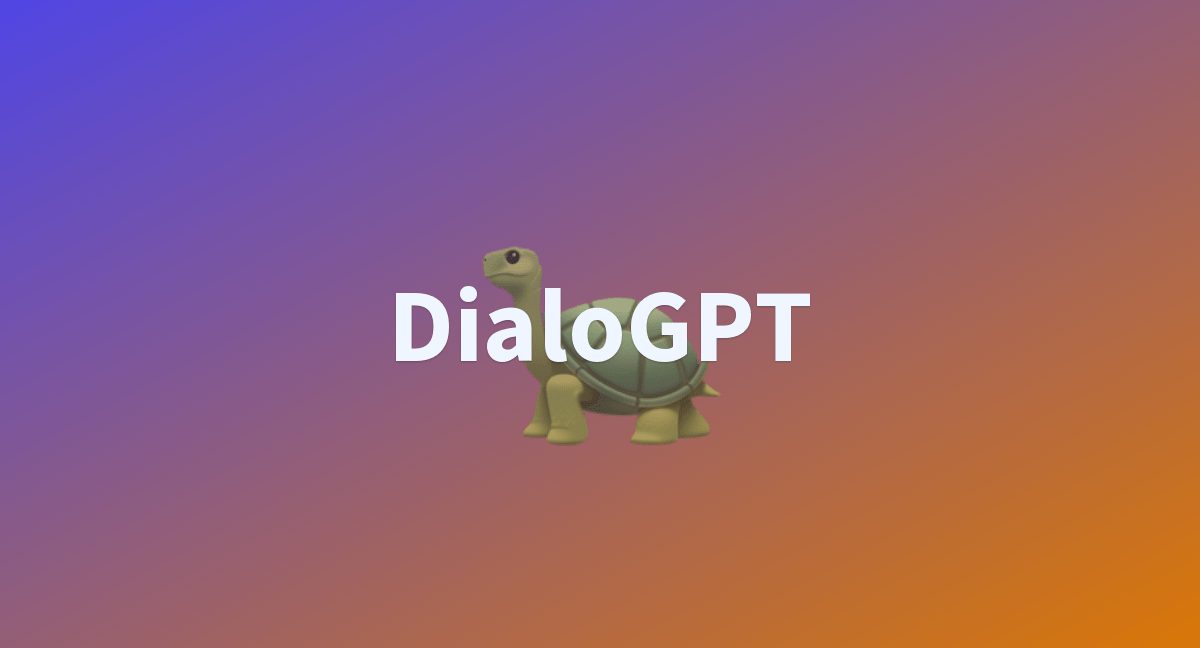
DialoGPT emerges as a significant player among GPT3 alternatives, especially for those seeking advanced capabilities in conversational AI. As a large language model developed focusing on dialogue, it offers nuanced and dynamic interactions, making it a go-to choice for AI-driven chatbots and conversational interfaces.
DialoGPT best features
- Advanced conversational capabilities: DialoGPT excels in generating human-like text, offering realistic and engaging dialogue experiences
- Finetuning for specific context: Finetune the model for specific scenarios, enhancing its effectiveness in various natural language processing tasks
- Multi-turn conversation handling: It adeptly manages multi-turn conversations, understanding and responding to context over several exchanges
- Scalability for large-scale models: This model can be scaled to handle large volumes of conversational data, making it suitable for extensive AI research and application
DialoGPT limitations
- Computing power requirements: Its sophisticated capabilities may demand significant computing resources
DialoGPT pricing
- DialoGPT is an open-source model, widely accessible without direct costs. However, implementing it in large-scale systems may involve infrastructure-related expenses
DialoGPT ratings and reviews
- As an open-source project, DialoGPT doesn’t have standardized ratings like commercial products. The AI community highly regards DialoGPT for its conversational abilities
7. LaMDA

Google’s LaMDA (Language Model for Dialogue Applications) represents a significant leap in GPT3 alternatives. LaMDA is designed to generate human-like text as a large language model, focusing on improving conversational AI capabilities.
It’s engineered to understand and respond to a wide range of topics, making it an ideal choice for those seeking a sophisticated language model for diverse applications.
LaMDA best features
- Advanced conversational abilities: LaMDA excels in producing more natural and open-ended conversations, setting a new standard in conversational AI
- Wide-ranging subject understanding: This model engages on a vast array of topics, providing relevant and contextually appropriate responses
- Finetuning for specific use cases: Finetune LaMDA for particular applications, enhancing its performance in specialized areas like customer service or creative storytelling
- Multilingual support: It supports multiple languages, making it a versatile choice for global applications
LaMDA limitations
- Resource intensive: Being a large-scale model, it requires substantial computing power for optimal performance
- Limited public access: Currently, LaMDA’s access is more restricted compared to some other models, limiting its availability for widespread use
LaMDA pricing
- As of now, Google hasn’t publicly disclosed the pricing details for LaMDA. It’s primarily used internally, and in select Google products
LaMDA ratings and reviews
- Due to its limited public release, there are no available user ratings and reviews for LaMDA yet. However, it has received notable attention and acclaim within the AI research community
8. Hugging Face
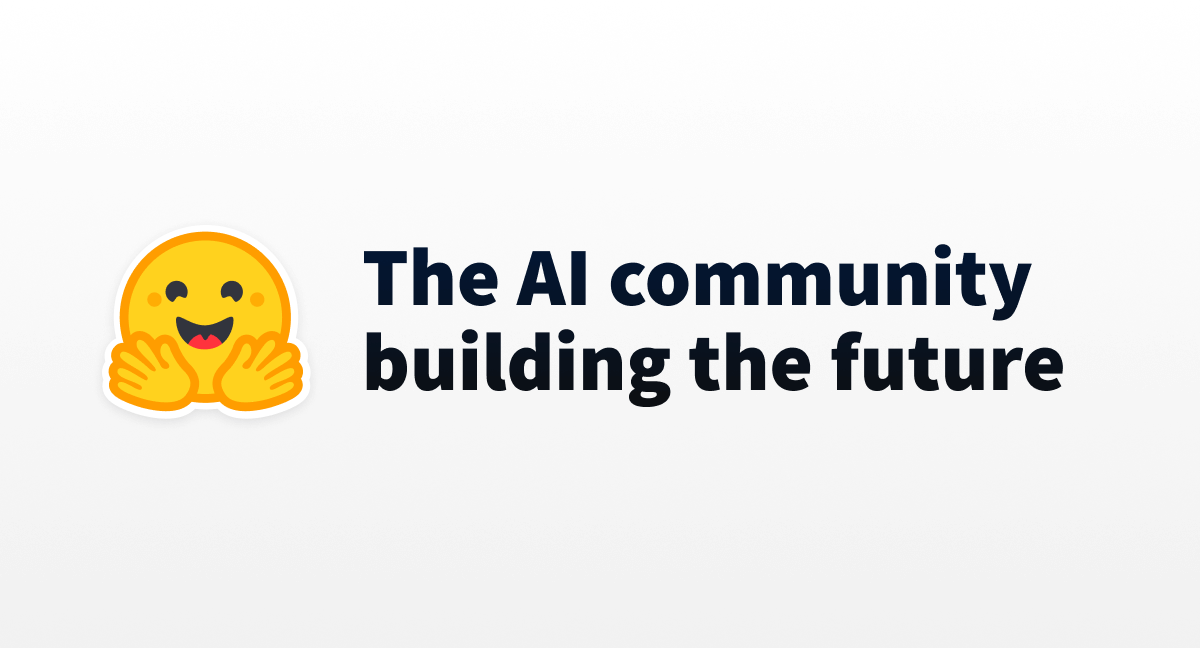
Hugging Face has emerged as a noteworthy contender of GPT3 alternatives. It’s an AI startup known for its significant contributions. Hugging Face caters to those looking for robust, open-source options in large-scale language models, offering a wide range of pre-trained models.
Hugging Face best features
- Diverse range of pre-trained models: It provides access to a multitude of language models, including large language models and autoregressive models, suitable for a variety of natural language tasks
- Natural language understanding and generation: Their models are adept at producing human-like text, useful in conversational AI, text generation, and more
- Flexible for research and development: Highly valued in scientific research and AI research projects, it offers models that can be fine-tuned for specific deep-learning tasks
Hugging Face limitations
- Complexity for beginners: The extensive range of models and features can be overwhelming for newcomers to NLP or AI
- Resource requirements: Some large-scale models might require substantial computing power, which could be a limitation for users with less powerful hardware
Hugging Face pricing
- HF hub (free plan): Free
- PRO account: $9/month
- Enterprise hub: Starting at $20/user/month
- Spaces hardware: Starting at $0.05/hour
- Inference endpoints: Starting at $0.06/hour
- Auto train: Starting at $0/model
Hugging Face ratings and reviews
- G2: Not enough ratings
- Capterra: Rating not available
9. Otter.AI
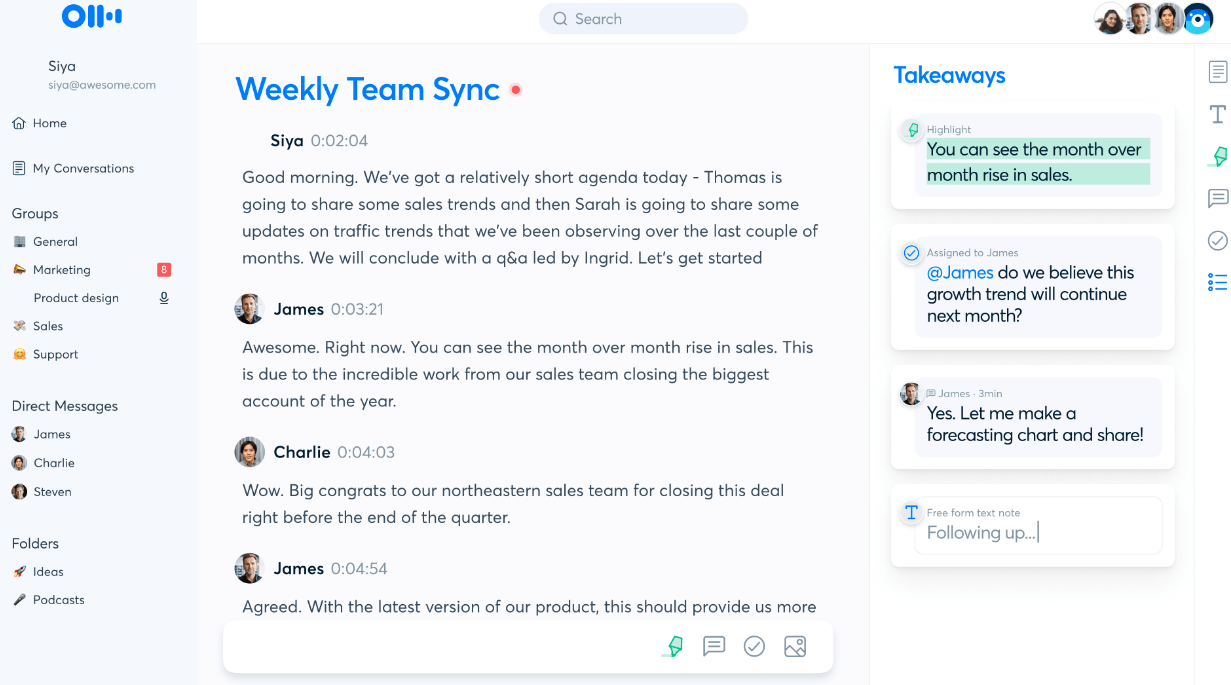
Otter.AI emerges as one of the formidable alternatives to GPT3 in 2024, particularly for those seeking advanced AI capabilities in transcription and voice recognition. Its focus on harnessing AI for natural language processing and generation sets it apart, making it an essential tool for professionals and businesses alike.
Otter.AI best features
- AI-enhanced transcription: Otter.AI excels in converting speech to text with high accuracy using advanced language models
- Real-time transcription: Its ability to transcribe in real-time makes it ideal for meetings, lectures, and interviews
- Voice recognition: The platform’s AI can identify different speakers, enhancing the clarity and usability of transcriptions
- AI-powered summarization: Otter.AI offers a feature to summarize long conversations or documents, a testament to its sophisticated understanding of natural language
- Integration with virtual meetings: The AI seamlessly integrates with popular virtual meeting platforms, providing live transcriptions and post-meeting summaries
Otter.AI limitations
- Accuracy in noisy environments: While highly accurate, its performance can vary in very noisy settings
- Limited language support: Currently, it primarily supports English, which might be a limitation for multilingual users
Otter.AI pricing
- Basic: Free
- Pro: $10 USD per user/month (billed annually)
- Business: $20/month per user (billed annually)
- Enterprise: Contact for pricing
Otter.AI ratings and reviews
- G2: 4.1/5 (128 reviews)
- Capterra: 4.5/5 (65 user reviews)
10. Bloom

Bloom is a robust GPT3 alternative that stands out as a powerful and versatile large language model. Developed by Hugging Face’s BigScience, it’s designed for diverse language tasks, demonstrating impressive capabilities in natural language processing.
Bloom best features
- Autoregressive language model: Bloom is an autoregressive large language model adept at generating coherent and human-like text from prompts
- Versatile text generation: Beyond its training data, Bloom performs various text tasks by treating them as text generation challenges
- Transformer-based architecture: This model leverages a transformer-based language model structure, known for its effectiveness in handling large-scale language tasks
. Bloom limitations
- Learning curve: The sheer scale of the model poses a learning challenge for new users.
Bloom pricing
- It is an open-source project and does not have a direct pricing structure for accessing the model itself.
Bloom ratings and reviews
- Ratings for Bloom on G2 and Capterra are not readily available. Bloom might not be listed on these platforms.
The best GPT3 alternative for you
As we conclude our exploration of the top 10 GPT3 alternatives in 2024, it’s clear that the realm of AI writing and natural language processing is not just thriving—it’s evolving at a remarkable pace. Each of these alternatives brings its unique strengths and innovations, pushing the boundaries of what’s possible in AI-powered communication and creativity.
From enhancing task management to breaking new ground in multilingual capabilities, these models are more than just tools; they’re partners in our journey toward a more efficient, expressive, and connected world. As technology advances, one thing remains certain: the future of AI writing is bright, diverse, and full of potential.
Whether it is a rich array of features or sheer adaptability, ClickUp emerges as a clear leader. In addition to its remarkable features, you have the AI aspect, which adds to your writing capabilities. Another facet that adds to ClickUp’s attraction is the ability to collaborate across stakeholders and tasks to ensure that the output is in tune with expectations.
Sign up for free today!



